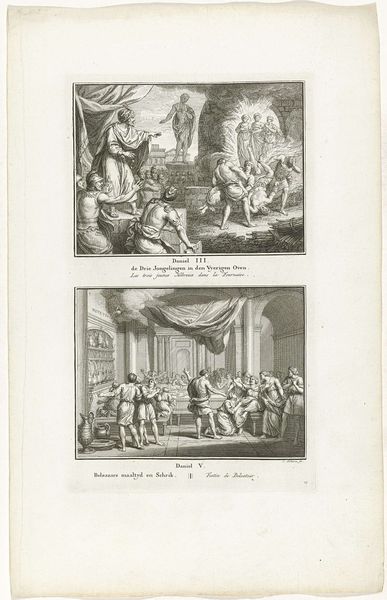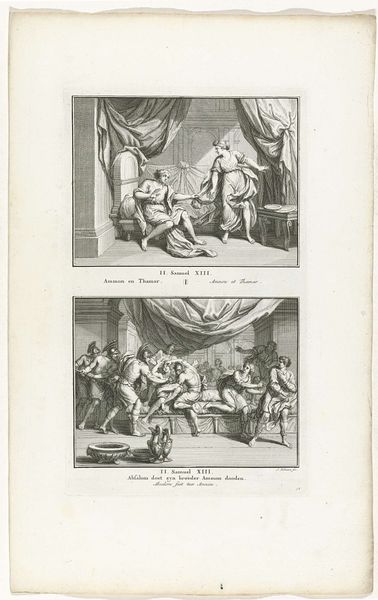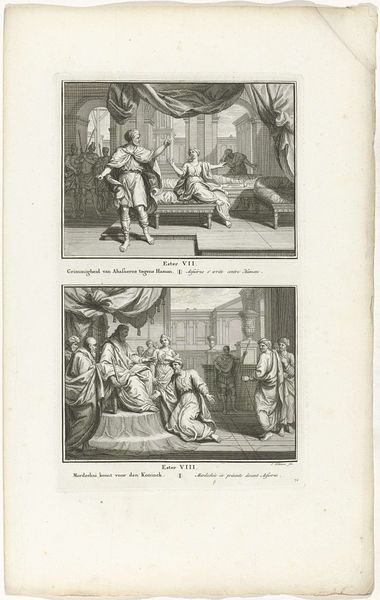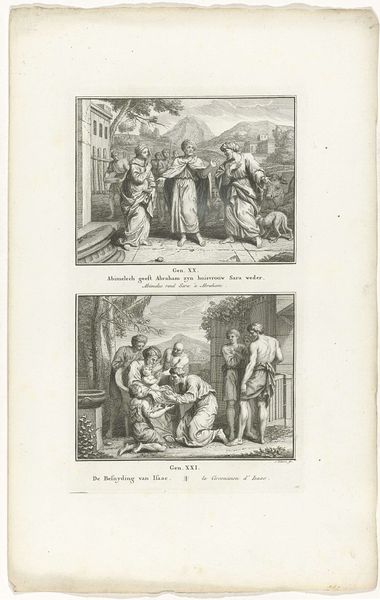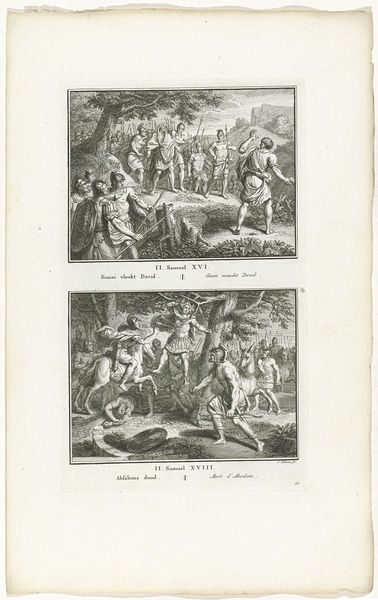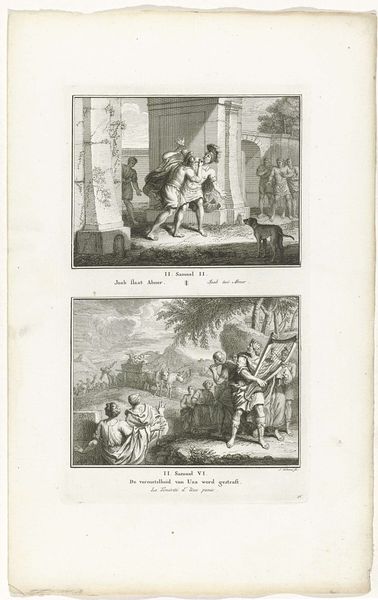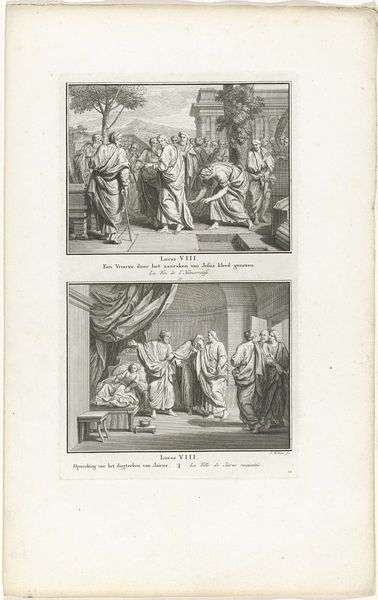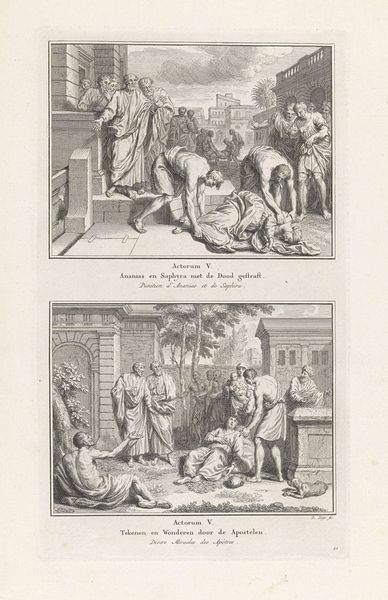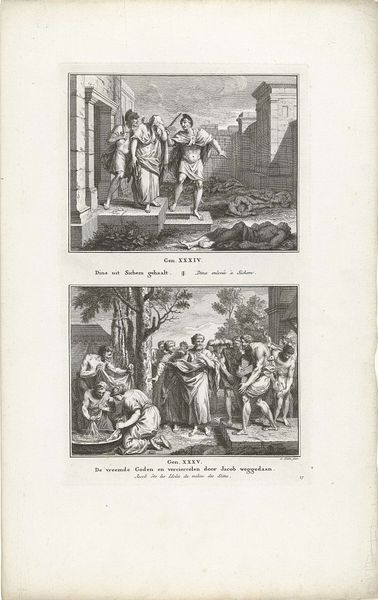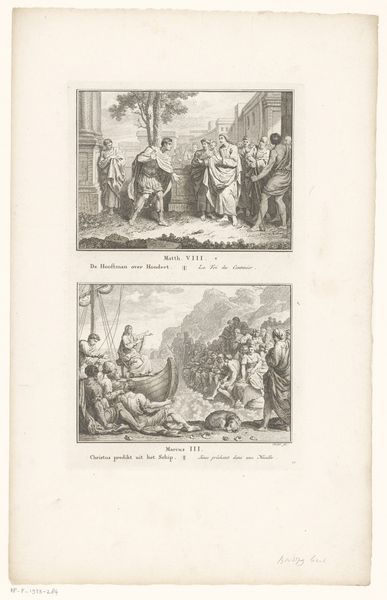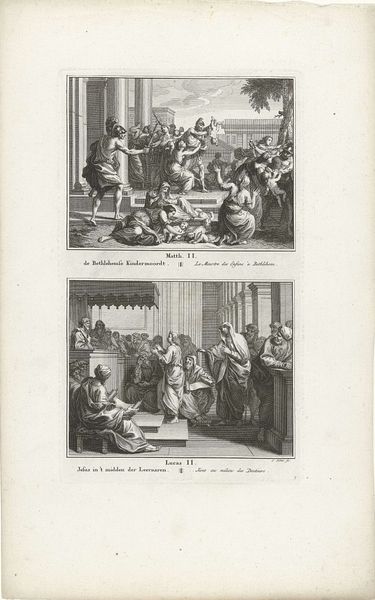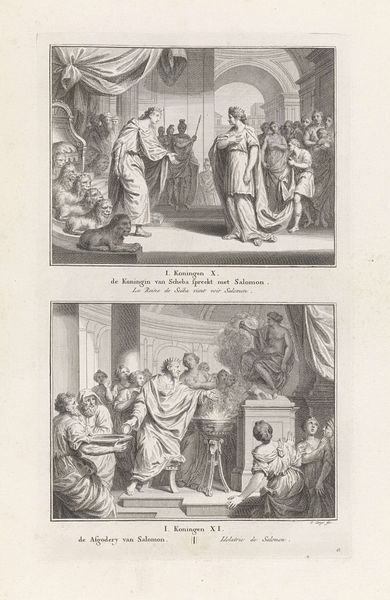
Safan leest koning Josia het wetboek voor en koning Josia verwoest de tempels 1791
0:00
0:00
Dimensions: height 327 mm, width 195 mm
Copyright: Rijks Museum: Open Domain
Editor: We’re looking at "Safan leest koning Josia het wetboek voor en koning Josia verwoest de tempels" by Jacob Folkema, made in 1791. It's a print, quite detailed despite the small scale, and seems to depict two distinct scenes, both quite dramatic. What strikes you about this piece? Curator: I notice immediately the medium – engraving. This piece would have required significant labor, a collaboration between the artist and the printmaker. The lines etched into the copper plate, then transferred onto paper through a printing press – it speaks to a system of production, doesn't it? Consider the economic implications: Who commissioned this work? Who could afford it? What function did this print serve beyond mere aesthetics? Editor: That's interesting! I hadn’t considered the production process in such detail. The narrative scenes, depicting biblical events, distracted me. Curator: Exactly! The "narrative" is embedded within a material reality. Ink, paper, the printing press itself, each contributes to how the story is disseminated and consumed. Think about the role of prints in spreading knowledge and ideas at this time. How does the relative accessibility of prints versus painting impact their social function? Editor: So, by focusing on the materials and method, we understand the artwork less as a unique object of artistic genius and more as a product of its time? Curator: Precisely. It's not about diminishing artistic skill, but acknowledging the social forces, labor, and economic conditions intertwined with its creation. It is important to ask why the biblical narrative was seen to be an important thing to circulate in print. Editor: That definitely gives me a different perspective on the work. It moves it away from being simply an illustration and instead asks how these illustrations affected the society around it, the people that used these reproducible images for specific purposes. Curator: Indeed. Looking at the materiality allows us to examine consumption of ideas. It broadens our understanding from the artist's intention to the artwork’s impact on society.
Comments
No comments
Be the first to comment and join the conversation on the ultimate creative platform.
